Inspired by conversations on the Food52 Hotline, we're sharing tips and tricks that make navigating all of our kitchens easier and more fun.
Today: You don't have to wait any longer -- here's how to speed up your fruit's ripening.
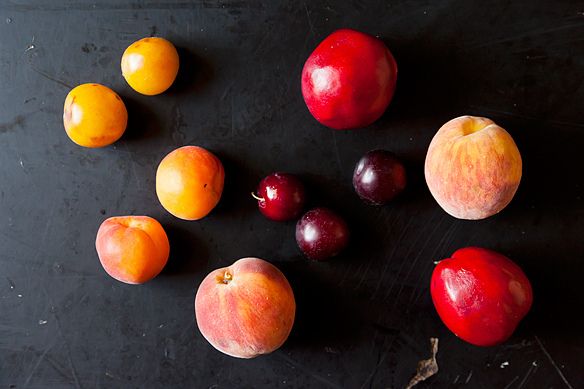
Think on this: all of the lush fruits and vegetables that fill our markets and our plates, with an almost-infinite range of flavors and textures and varieties, all come from tiny, singular seeds.
The science behind these seeds -- how they grow, reproduce, and turn from specks-in-dirt into food -- is magic. The sweet, juicy plum you eat is the result of a long, complicated chain of scientific events that ends in nothing but pure, simple pleasure.
And when you pick the perfectly ripe specimen, good for you. But not all of us are that lucky. Some of us come home with hard peaches, or rigid avocados that simply aren't ready for mashing. What then?
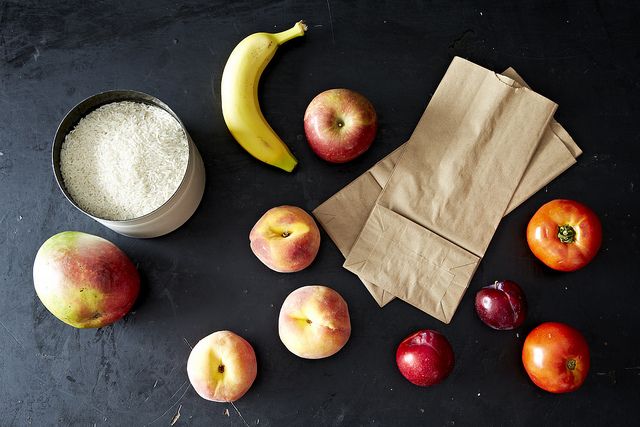
There are ways for us to play God, as it were, in the lifecycle of a fruit. We can speed up the ripening of some of our produce. But first, some science, thanks to Jeffrey Steingarten's lovely Ripeness is All:
Some fruits will never ripen after being picked. This sad fact applies to most citrus, most berries, grapes, pineapple, and watermelon. All you can ask of these is that they be fully mature when they're picked. Sorry.
Some fruit ripens off of the vine, but only in that it gets softer, more colorful, and more juicy -- not sweeter. This includes blueberries, figs, most stone fruit, and melons (not of the water variety). But we'll take soft figs over not soft figs any day.
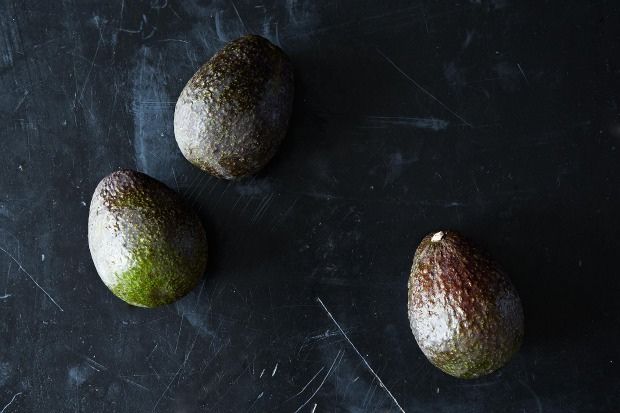
Then there are the fruits that actually do what you want them to: they get sweeter once you take them home. Yet another reason to love apples, pears, mangoes, and kiwis. Avocadoes are special here because they only ripen off the vine. Way to go, avocado.
Whether you're sweetening or just softening, the key to ripening your fruit at home is to harness naturally-occurring ethylene, a gas given off by fruit that aids in ripening. To do this, all you need is a paper bag, and maybe a few extra pieces of fruit if you're extra anxious to bite into your hard plums.
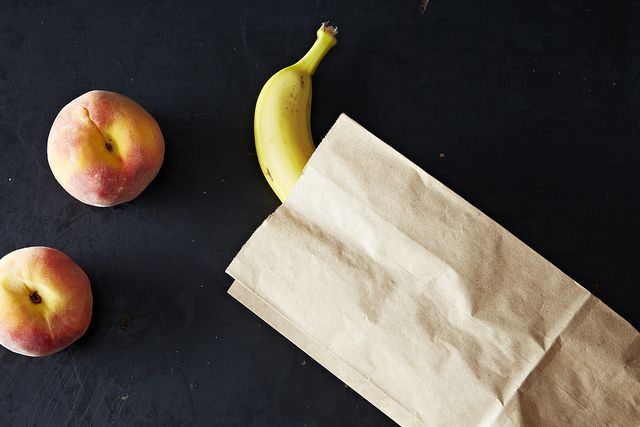
The classic paper bag trick is the simplest way to soften your fruit: place whatever you have in a paper bag, seal it as best you can, and wait. Check on the bag's contents after a few days.
To speed things up, you can also add an apple or a banana to your paper bag. These fruits -- bananas especially -- give off more ethylene than others, which will help ripen (or at least soften) any late bloomers lingering nearby.
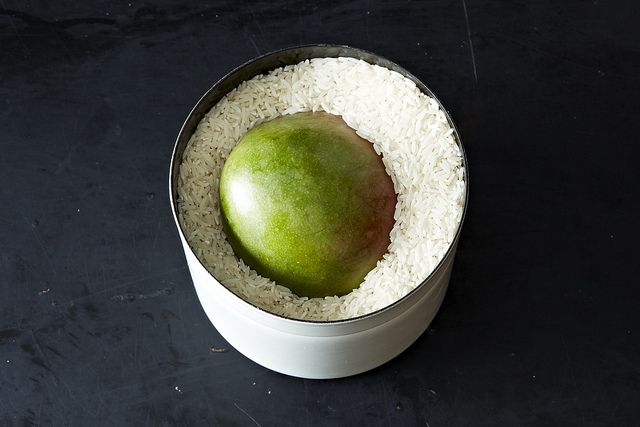
If you don't have any paper bags handy, don't fear -- you, too, can have softer fruit, faster. Rice traps ethylene effectively -- in Indian households, mangoes are often submerged in a container of rice to speed up their ripening.
And then there are peaches. With their delicate skin and soft fuzz and all-consuming fragrance, peaches deserve their own ripening method. One that looks like a Cézanne painting.
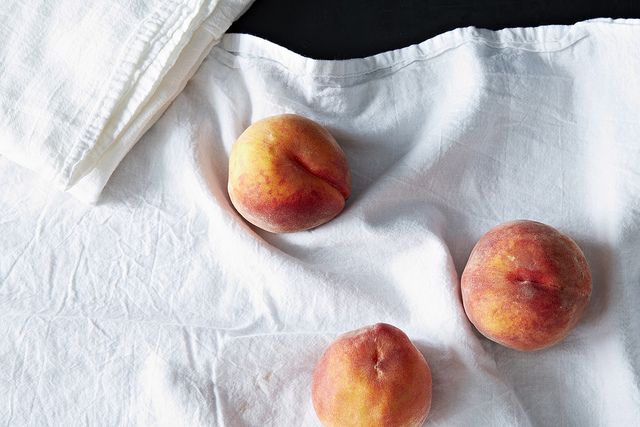
Here's how you do it: Lay down a clean linen napkin or cotton tea towel. (Looking for a good one? We know a guy.) You want something breathable, but stay away from terrycloth as it will trap in moisture. Place your peaches stem-side down, making sure they don't touch. Cover with a second napkin or tea towel, and wait a few days. You'll know your peaches are ripe when they have a strong, fragrant scent and their stem sides have flattened a bit from the weight of the whole fruit.
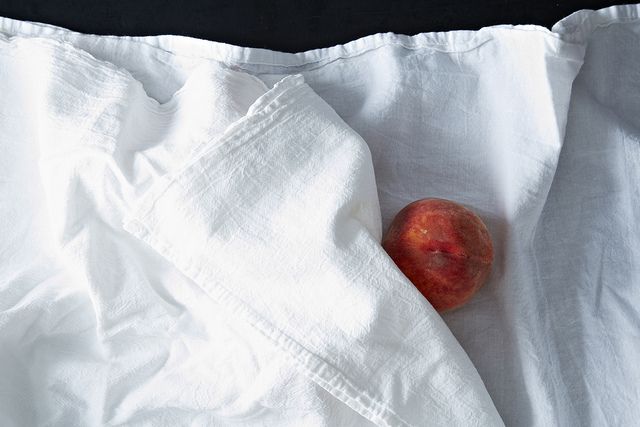
Now take a bite, and let the juice run down your face, and smile. And then go forth and make yourself some pie with the others.
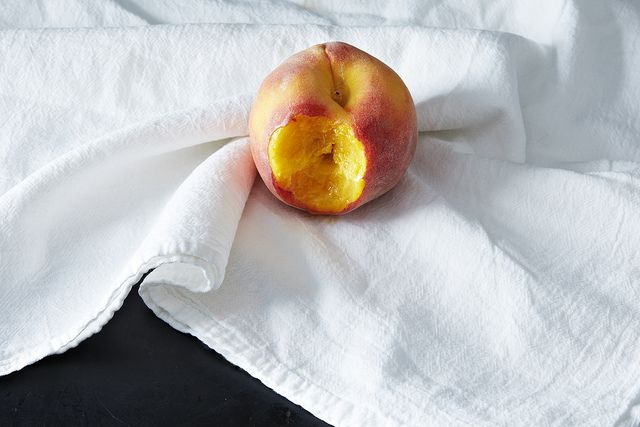
Looking to do more with your perfectly ripe fruit, aside from eating it plain? Try these:
Peach Pandowdy
White Peach Jam
Mango Salad
Spiced Plum Cobbler
Photos by James Ransom









See what other Food52 readers are saying.